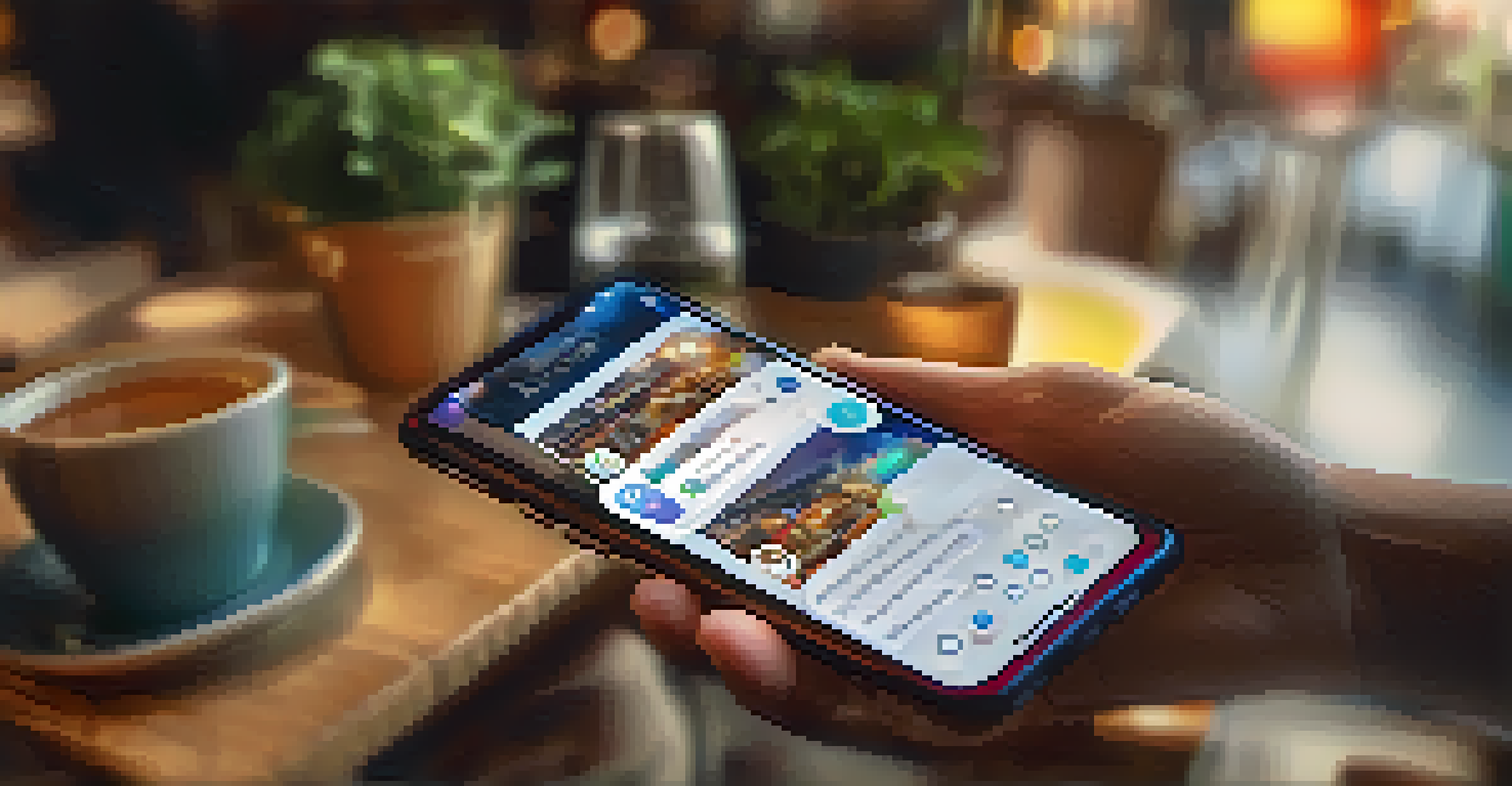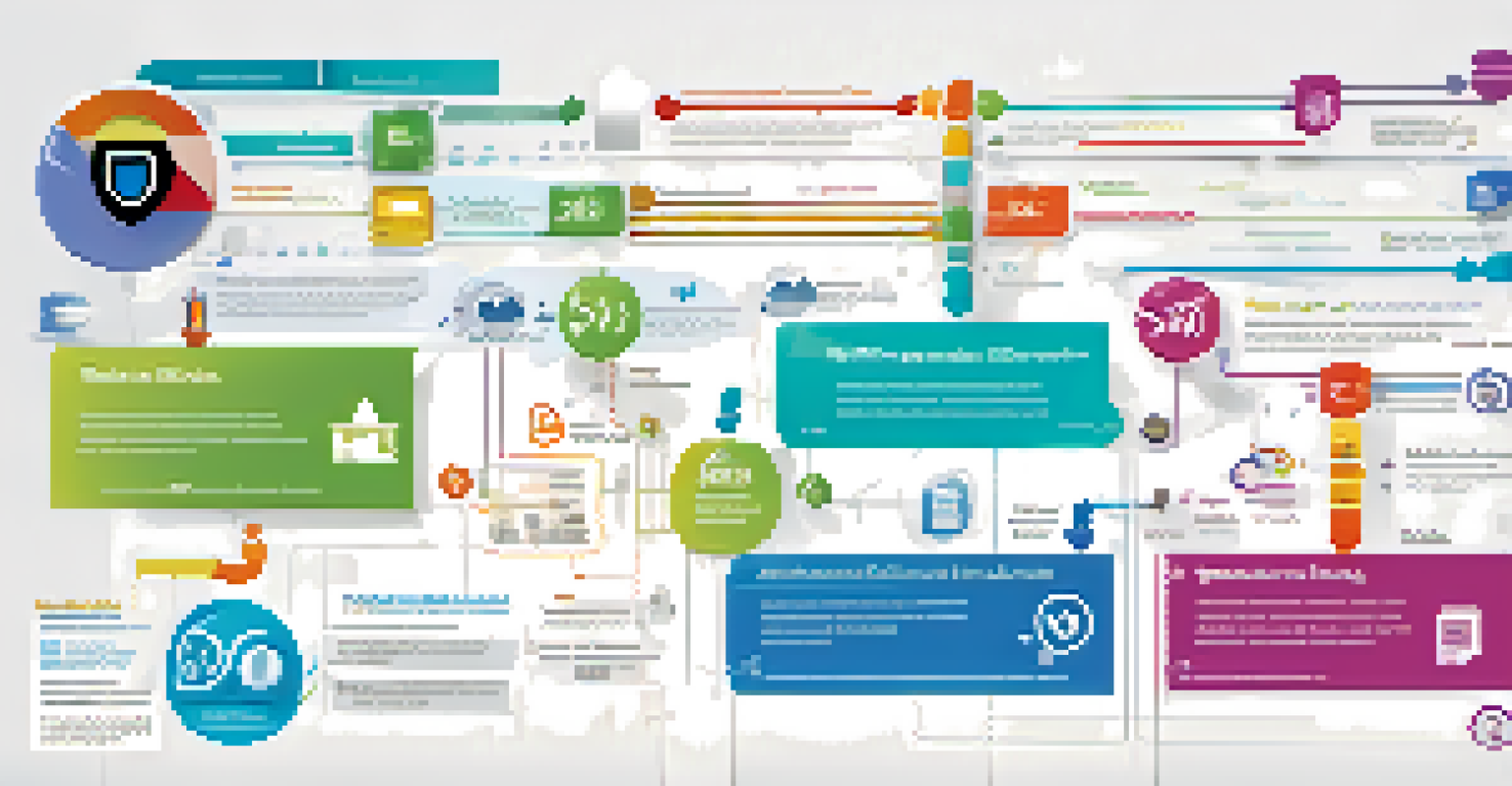How Social Media Can Facilitate Group Collaboration

Understanding the Role of Social Media in Collaboration
Social media has transformed the way we interact, and its impact on group collaboration is significant. It offers platforms where team members can communicate in real time, share ideas, and provide feedback instantly. This immediacy fosters a sense of connection that traditional communication methods often lack, making collaboration feel more engaging and dynamic.
The way we communicate with others and with ourselves ultimately determines the quality of our lives.
Moreover, social media breaks down geographical barriers, allowing teams spread across different locations to work together seamlessly. Tools like Facebook Groups or Slack channels enable members to stay connected, leveraging their diverse insights to drive projects forward. This inclusivity not only enhances creativity but also builds a stronger team rapport.
As groups utilize social media for collaboration, they also cultivate an environment that encourages transparency. Open discussions and shared updates on platforms create a culture of accountability, where every member feels valued and responsible for contributing to the team's goals.
Real-Time Communication: The Heart of Collaboration
One of the biggest advantages of social media is its ability to facilitate real-time communication. Unlike emails that can sit unread for hours, platforms like WhatsApp or Twitter allow for immediate exchanges, ensuring that ideas can be shared and refined on the go. This rapid feedback loop can lead to faster decision-making and a more agile team response.

Furthermore, the informal nature of social media can help to reduce barriers in communication. Team members may feel more comfortable sharing their thoughts or asking questions in a casual setting compared to a formal meeting. This openness often leads to richer discussions and innovative solutions, as everyone is encouraged to voice their opinions.
Real-Time Communication Boosts Teams
Social media enables instant exchanges, fostering faster decision-making and more dynamic collaboration.
Additionally, real-time communication fosters a sense of urgency and momentum within the group. When everyone is engaged in discussions as they happen, it creates a shared rhythm that keeps projects moving forward and maintains high levels of motivation.
Creating a Centralized Hub for Information Sharing
Social media platforms can serve as centralized hubs for information sharing, consolidating resources and updates in one accessible location. By using platforms like Google Drive integrated with social media tools, teams can easily share documents and collaborative notes without sifting through endless email threads. This organization enhances efficiency and ensures everyone has access to the latest information.
Collaboration allows us to know more than we are capable of knowing by ourselves.
Moreover, these hubs can be tailored to fit the needs of the team, allowing for the creation of specific groups or channels for different projects. This structure prevents information overload and ensures that discussions remain focused and relevant. Team members can easily find what they need, saving time and reducing frustration.
Additionally, by archiving discussions and decisions on social media, teams can refer back to past conversations and documents. This historical context can be invaluable for new team members and can help maintain continuity in long-term projects.
Encouraging Engagement and Team Bonding
Social media excels at promoting engagement, which is crucial for effective collaboration. By sharing successes, challenges, and even personal milestones, team members can bond over shared experiences. This emotional connection can lead to a more cohesive team, where members are invested in each other's success.
Incorporating fun elements, like polls or quizzes, can also boost interaction. These light-hearted activities break up the routine and create opportunities for team members to connect on a more personal level. When individuals feel more connected, they are more likely to collaborate effectively.
Centralized Hubs Enhance Efficiency
Using social media as a centralized information hub streamlines resource sharing and keeps teams organized.
Furthermore, recognizing individual contributions on social media can enhance motivation and morale. Celebrating achievements publicly fosters a positive team culture, encouraging everyone to contribute their best work.
Utilizing Visual Content for Enhanced Communication
Visual content is a powerful tool for communication, and social media shines in this area. Infographics, images, and videos can convey complex ideas more clearly than text alone. By incorporating visual elements into discussions, teams can enhance understanding and retention of key concepts.
For instance, when discussing a project update, sharing a visual timeline can help all members grasp the current status at a glance. This not only saves time but also aligns everyone on project goals and deadlines. Visuals can serve as a common reference point, reducing confusion and ensuring everyone is on the same page.
Moreover, engaging with visual content can spark creativity. Team members may feel inspired to think outside the box and contribute innovative ideas that align with the visual narrative, enhancing overall collaboration.
Leveraging Feedback Loops Through Social Media
Feedback is vital in any collaborative effort, and social media provides an excellent platform for continuous input. Teams can easily solicit feedback on ideas, designs, or strategies by creating polls and discussion threads. This quick access to diverse opinions can lead to more informed decisions and stronger outcomes.
Additionally, social media allows for anonymous feedback, which can encourage more honest and constructive criticism. Tools like SurveyMonkey or Google Forms can be integrated into social platforms, enabling team members to share their thoughts without fear of judgment. This openness can lead to significant improvements in team processes.
Visuals Spark Creativity and Clarity
Incorporating visual content into discussions enhances understanding and encourages innovative contributions from team members.
Regularly engaging in feedback loops also reinforces a culture of growth and learning. Teams that embrace constructive criticism are more likely to adapt and evolve, ultimately leading to enhanced collaboration and success.
Navigating Challenges of Social Media Collaboration
While social media offers numerous advantages, it's essential to acknowledge the challenges it can present for group collaboration. Information overload is a common issue, as the constant influx of messages can lead to confusion and missed updates. Establishing clear guidelines for communication can help mitigate this problem and ensure that important information doesn’t get lost.
Another challenge is maintaining professionalism in a casual environment. The informal nature of social media can sometimes lead to misunderstandings or conflicts. Encouraging respectful communication and setting boundaries can help maintain a positive atmosphere that supports collaboration.

Finally, it's crucial to remember that not everyone may feel comfortable with social media. Some team members might prefer traditional communication methods. Striking a balance between different modes of communication ensures that everyone feels included and valued in the collaborative process.